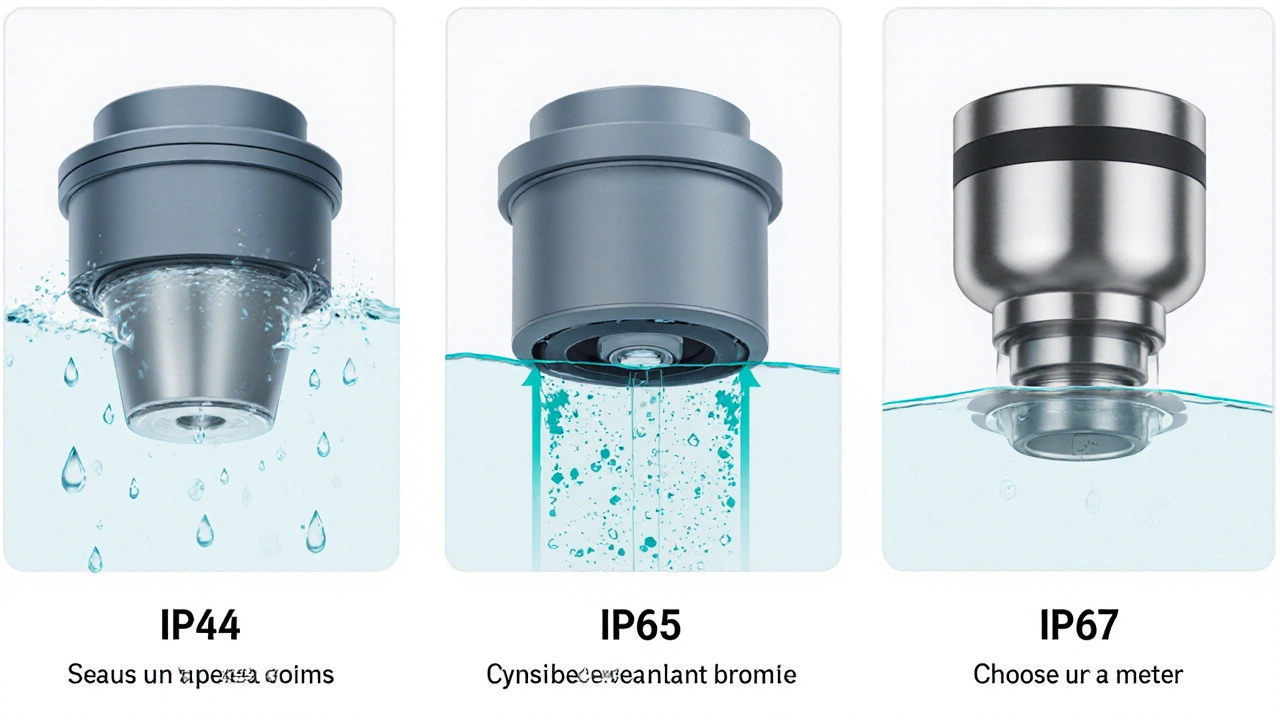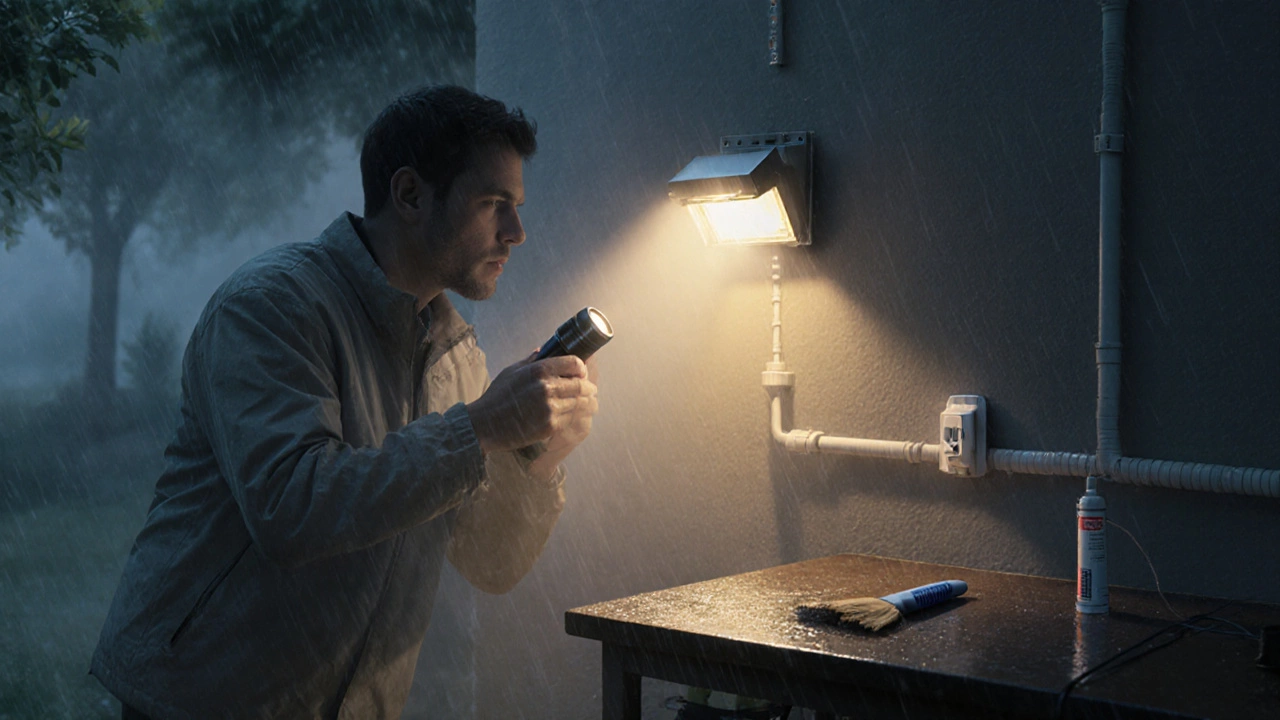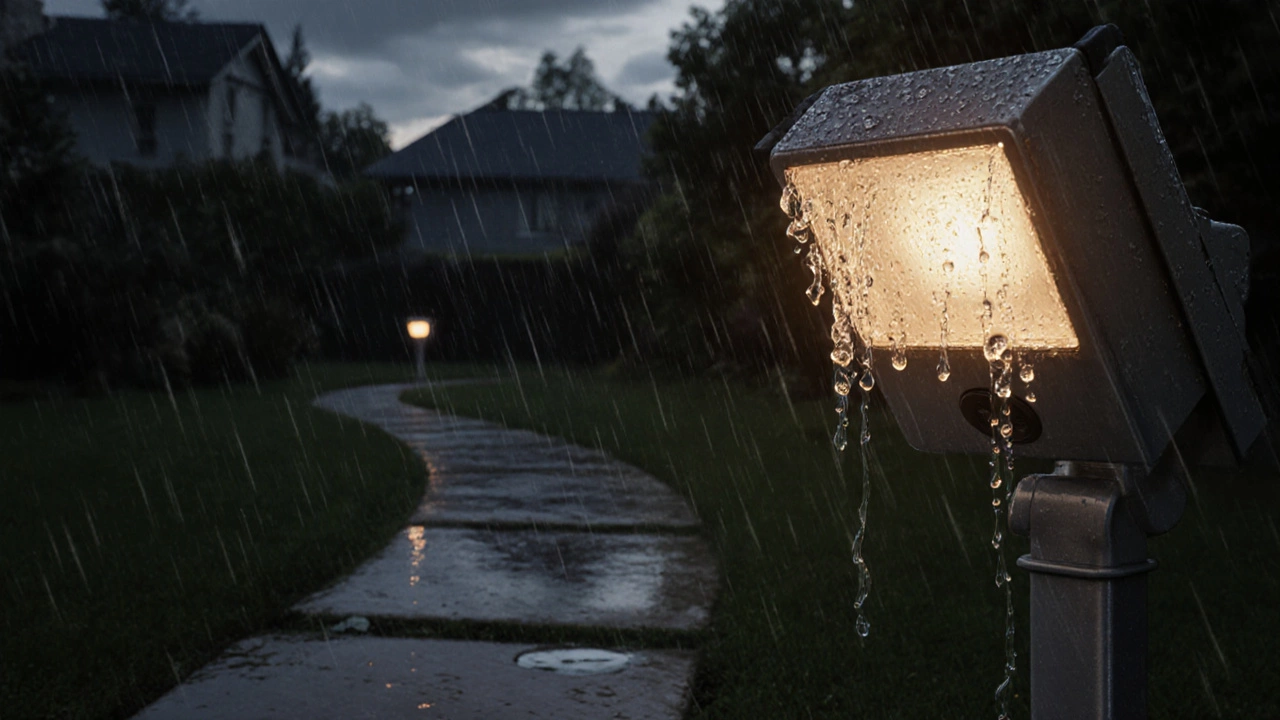IP Rating Guide for Outdoor Lighting
Select Your Climate Zone
| IP Rating | Water Resistance | Best For | Typical Cost Range (AU$) |
|---|---|---|---|
| IP44 | Protected against splashing water | Patios, decorative garden lights | 30–80 |
| IP65 | Sealed against water jets | Path lights, driveway lanterns, areas with heavy rain | 80–150 |
| IP67 | Can be submerged up to 1 m for 30 min | Coastal installations, flood-prone zones, security lights | 150–250 |
Explanation:
Key Takeaways
- Understanding IP ratings helps you pick the right level of water resistance.
- Use weather‑proof sealants and proper mounting brackets to keep moisture out.
- Install GFCI outlets and conduit to protect wiring from electrical hazards.
- Regularly inspect seals, connectors, and drainage after each storm.
- Choose LED fixtures with higher IP ratings for the toughest climates.
If you’ve ever watched a garden spotlight sputter out after a downpour, you know how frustrating rain can be for protect outdoor lights from rain. The good news? A few smart steps can turn any outdoor lighting setup into a rain‑proof system that shines night after night.
Outdoor lights are lighting fixtures installed outside homes, businesses, or public spaces to illuminate pathways, gardens, and facades. They face constant exposure to moisture, temperature swings, and UV radiation, which can degrade seals, corrode metal, and cause electrical faults if not properly protected.
Why Rain Is Bad for Outdoor Lights
Water itself isn’t the enemy; it’s what it brings along-dust, salt, and temperature changes. When rain seeps into a fixture, it can cause:
- Corrosion of metal housings and connectors, leading to loose connections.
- Short‑circuits if moisture reaches the wiring, especially in older copper conductors.
- Premature LED degradation because water can affect the heat‑sink efficiency.
- Flickering or complete failure of the light, which defeats the safety purpose of illumination.
Understanding how water enters a fixture is the first step to stopping it.
Decoding IP Ratings - The Waterproof Scorecard
Most modern fixtures come with an IP rating a numeric code that indicates the level of protection against solid objects (first digit) and liquids (second digit). The higher the second digit, the better the water resistance:
- IP44: Protected against splashing water from any direction. Good for light rain or mist.
- IP65: Sealed against water jets; ideal for areas with heavy rain or sprinkler systems.
- IP67: Can be submerged up to 1m for 30minutes-perfect for coastal locations or spots prone to flooding.
When you buy a new fixture, match the IP rating to your climate. Adelaide’s occasional heavy storms usually require at least IP65, while a simple garden path might get by with IP44.

Choosing the Right Fixture
Not all outdoor lights are created equal. Here’s what to look for:
- LED technology - consumes less power and generates less heat, reducing the chance of seal failure.
- Sturdy housing made of powder‑coated aluminum or stainless steel to resist corrosion.
- Integrated gasket a rubber or silicone seal that sits between the lens and the housing that matches the fixture’s IP rating.
- Removable lens for easy cleaning and resealing.
If you’re upgrading an existing fixture, check the product’s spec sheet for the exact IP rating and verify that the gasket is replaceable.
Sealing and Mounting Techniques
Even the best‑rated fixture can leak if it’s not mounted correctly. Follow these steps:
- Clean the mounting surface-remove dust, rust, and old sealant.
- Apply a thin bead of weather‑proof sealant silicone or polyurethane that remains flexible after curing around the hole before inserting the fixture.
- Use a mounting bracket stainless‑steel or coated metal bracket designed for outdoor use that provides a drainage gap of at least 2mm.
- Torque the mounting screws to the manufacturer’s torque specification-over‑tightening can crush the gasket.
- After the sealant cures (usually 24hours), run a hose at low pressure to check for leaks around the base.
For extra peace of mind, add a small silicone splash guard above the fixture’s opening; it deflects runoff that might otherwise pool.
Wiring Safety - GFCI Outlets and Conduit
Moisture can travel along wiring as well. Protect the electrical side with two key components:
- GFCI outlet Ground‑Fault Circuit Interrupter that shuts off power if a leak is detected. Install it within 3m of the first outdoor light and test it monthly.
- conduit rigid or flexible PVC tubing that encloses the wiring. It prevents stray water from reaching the conductors and makes future upgrades easier.
When running conduit, maintain a slight downward slope toward the power source so any water can drain away. Seal all conduit joints with waterproof tape.

Maintenance Checklist After Every Storm
Even the toughest setup benefits from a quick visual inspection. Here’s a 5‑point checklist:
- Look for water pooling at the base of each fixture; wipe away excess.
- Inspect the gasket for cracks or compression set-replace if you see any gaps.
- Check the bulb or LED module for discoloration, a sign of moisture ingress.
- Test the GFCI by pressing the ‘test’ button; it should trip and reset.
- Verify that the conduit remains sealed and that no corrosion has formed on screws or brackets.
Address any issue within 24hours to avoid long‑term damage.
IP Rating Comparison Chart
| IP Rating | Water Resistance | Best For | Typical Cost Range (AU$) |
|---|---|---|---|
| IP44 | Protected against splashing water | Patios, decorative garden lights | 30-80 |
| IP65 | Sealed against water jets | Path lights, driveway lanterns, areas with heavy rain | 80-150 |
| IP67 | Can be submerged up to 1m for 30min | Coastal installations, flood‑prone zones, security lights | 150-250 |
Frequently Asked Questions
Do I need a GFCI for every outdoor light?
A single GFCI that protects the entire circuit is enough, but the outlet must be within 3m of the first fixture and be rated for outdoor use.
Can I use regular silicone sealant on a metal fixture?
Yes, but choose a silicone that is UV‑stable and labeled for metal. It stays flexible and won’t crack under temperature swings.
What’s the difference between IP44 and IP45?
IP45 adds protection against low‑pressure water jets from any direction, a slight upgrade over IP44’s splash protection.
How often should I replace the gasket on my outdoor lights?
Inspect annually and replace any that show cracks, compression, or water stains. In salty coastal air, consider swapping every 2‑3years.
Is it safe to install outdoor lights myself?
If you’re comfortable working with low‑voltage wiring, using a GFCI and proper conduit, DIY is fine. For high‑voltage or complex circuits, hire a licensed electrician.

